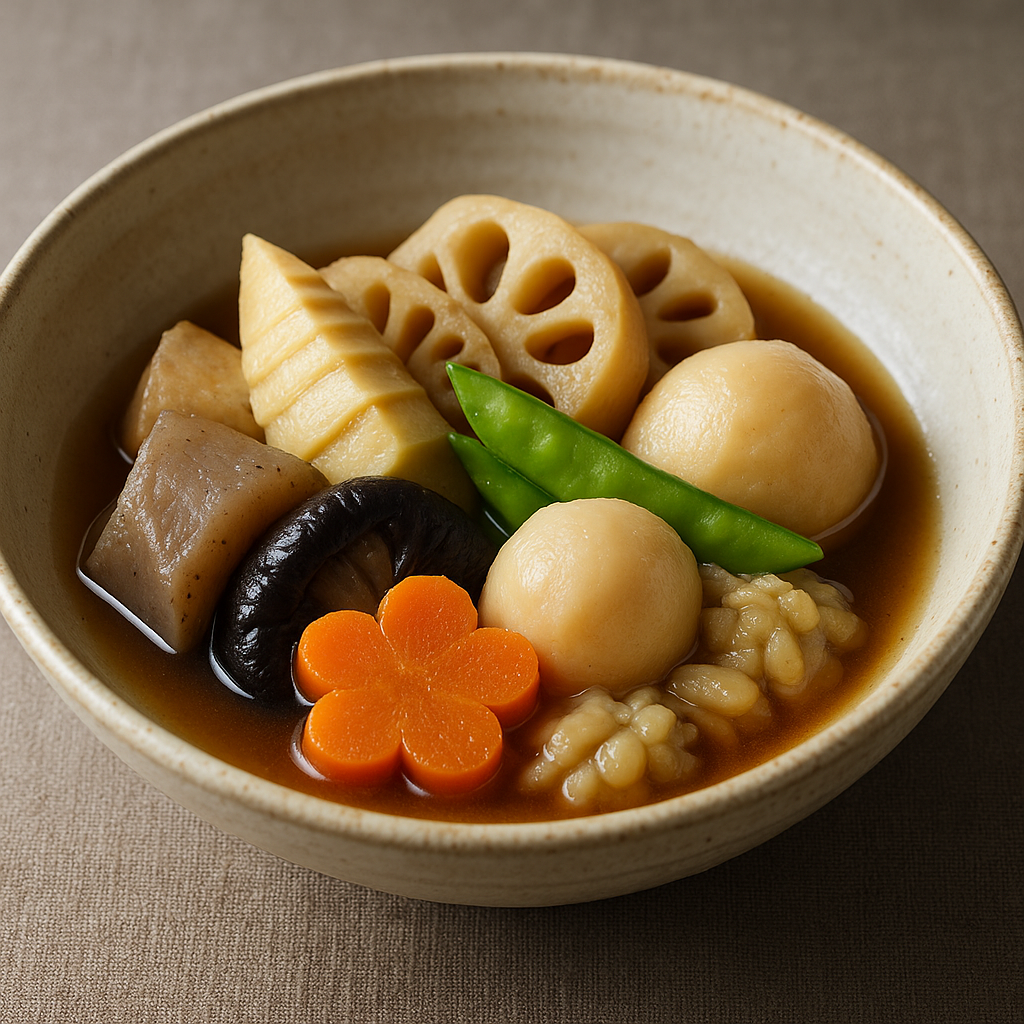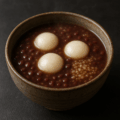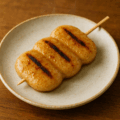煮しめ(岩手)の特徴
根菜たっぷり、旨みを重ねる行事の煮物
煮しめは、れんこん・ごぼう・にんじん・里いも・こんにゃく・干し椎茸などを一つの鍋でじっくり含め煮にする郷土料理です。干し椎茸の戻し汁や昆布だしを生かし、しょうゆ・みりん・酒で調えた甘じょっぱい味わいが、ごはんに良く合います。
素材ごとに下ごしらえし、別煮から“合わせ”へ
下ゆでや油通しなどの下ごしらえをしてから、具材の火通りに合わせて順に煮含めます。いったん冷ますと味が入りやすく、翌日はさらにおいしく感じられます。正月や祭礼などの晴れの席でも親しまれています。
煮しめ(岩手) レシピ
材料(5人分)
- 鶏もも肉 200g(または木綿豆腐/凍み豆腐)
- れんこん 150g
- ごぼう 120g
- にんじん 120g
- 里いも 200g
- こんにゃく 1枚
- 干し椎茸 6枚(戻し汁ごと使用)
- 絹さや 適量(仕上げの彩り)
- だし 400ml(椎茸の戻し汁+昆布だし)
- しょうゆ 大さじ3
- みりん 大さじ2
- 砂糖 大さじ1
- 酒 大さじ2
- 油 大さじ1(炒め用)
作り方
- 干し椎茸を戻す。戻し汁はこして取っておく。
- 根菜は大きめ一口大に切る。れんこん・ごぼうは水にさらす。
- こんにゃくは手でちぎるか短冊にし、下ゆでする。
- 鍋に油を熱し、鶏肉を軽く炒める。根菜を加えて油を回す。
- だし(椎茸の戻し汁含む)を注ぎ、落としぶた。沸騰後、中弱火で10〜15分。
- 里いも・こんにゃく・椎茸を加え、酒→砂糖→みりん→しょうゆの順で調味。さらに10〜15分、煮含める。
- 火を止めて冷ます。食べる前に温め直し、絹さやを加えて仕上げる。
シェフのワンポイントアドバイス
- 調味は砂糖→みりん→しょうゆの順に入れると味が馴染みやすいです。
- 落としぶたをすると、煮崩れしにくく、味も均一に入りやすいですね。
- 一度冷ますと味がしっかりと入るので、前日仕込みもおすすめです。
栄養価(1人分の目安)
- エネルギー:180〜260 kcal
- たんぱく質:8〜15 g(鶏肉/豆腐の使用量で変わります)
- 脂質:5〜12 g
- 炭水化物:20〜30 g
- 食物繊維:4〜7 g(根菜由来)
歴史
年取り・正月に受け継がれた“祝いの煮物”
東北各地では、年取りや正月の重ね料理として煮しめを用意する習わしがありました。根菜中心で日持ちがしやすく、大鍋で家族や来客をもてなす料理として受け継がれています。
乾物とだしが育む保存食文化
干し椎茸や凍み豆腐などの乾物を活用し、戻し汁まで生かして旨みを重ねるのが特徴です。昆布や煮干しのだしと合わせる家庭も多く、地域や家ごとの味が守られています。
English Version
Features of Nishime (Iwate)
A celebratory simmer of root vegetables layered with umami
Nishime is a homestyle stew in which lotus root, burdock, carrot, taro, konnyaku, and dried shiitake are gently simmered together. The shiitake soaking liquid and kombu dashi deepen the flavor, while soy sauce, mirin, and sake create a sweet-salty balance that pairs well with rice.
Prep each ingredient, then “combine and finish”
Ingredients are prepped by parboiling or quick-frying as needed, then simmered in order of doneness. Letting the stew cool allows flavors to penetrate; it often tastes even better the next day. It is also popular for New Year’s and festive occasions.
Nishime (Iwate) – Recipe
Ingredients (Serves 5)
- Chicken thigh 200 g (or firm tofu / frozen-dried tofu)
- Lotus root 150 g
- Burdock root 120 g
- Carrot 120 g
- Taro (satoimo) 200 g
- Konnyaku 1 slab
- Dried shiitake 6 caps (use soaking liquid)
- Snow peas for garnish (optional)
- Dashi 400 ml (shiitake soaking liquid + kombu dashi)
- Soy sauce 3 Tbsp
- Mirin 2 Tbsp
- Sugar 1 Tbsp
- Sake 2 Tbsp
- Oil 1 Tbsp (for sautéing)
Directions
- Soak dried shiitake; strain and reserve the soaking liquid.
- Cut root vegetables into large bite-size pieces; soak lotus root and burdock in water.
- Tear or slice konnyaku; parboil briefly.
- Heat oil; lightly sauté chicken. Add root vegetables and coat with oil.
- Add dashi (including shiitake liquid). Cover with a drop-lid; simmer 10–15 min over medium-low.
- Add taro, konnyaku, and shiitake; season in this order: sake → sugar → mirin → soy sauce. Simmer 10–15 min more to absorb.
- Turn off heat and let cool to absorb flavors. Reheat to serve; finish with snow peas.
Chef’s Tips
- Seasoning order sugar → mirin → soy sauce helps the flavors meld smoothly.
- A drop-lid keeps convection gentle, reducing breakage and ensuring even seasoning.
- Cooling once, then reheating, improves depth; making it a day ahead works well.
Nutrition (per serving, approx.)
- Energy: 180–260 kcal
- Protein: 8–15 g (varies with chicken/tofu)
- Fat: 5–12 g
- Carbohydrates: 20–30 g
- Dietary fiber: 4–7 g (from root vegetables)
History
A “layered” festive stew for year-end and New Year
Across Tohoku, families traditionally prepare nishime as part of year-end and New Year meals. Root-vegetable centered and relatively keepable, it is cooked in a large pot to serve family and guests.
Preserved foods and dashi culture
Nishime showcases dried foods such as shiitake and frozen-dried tofu, making full use of their soaking liquids to build umami. Kombu or niboshi stocks are common too, with each household preserving its own flavor.



何でも質問してください!